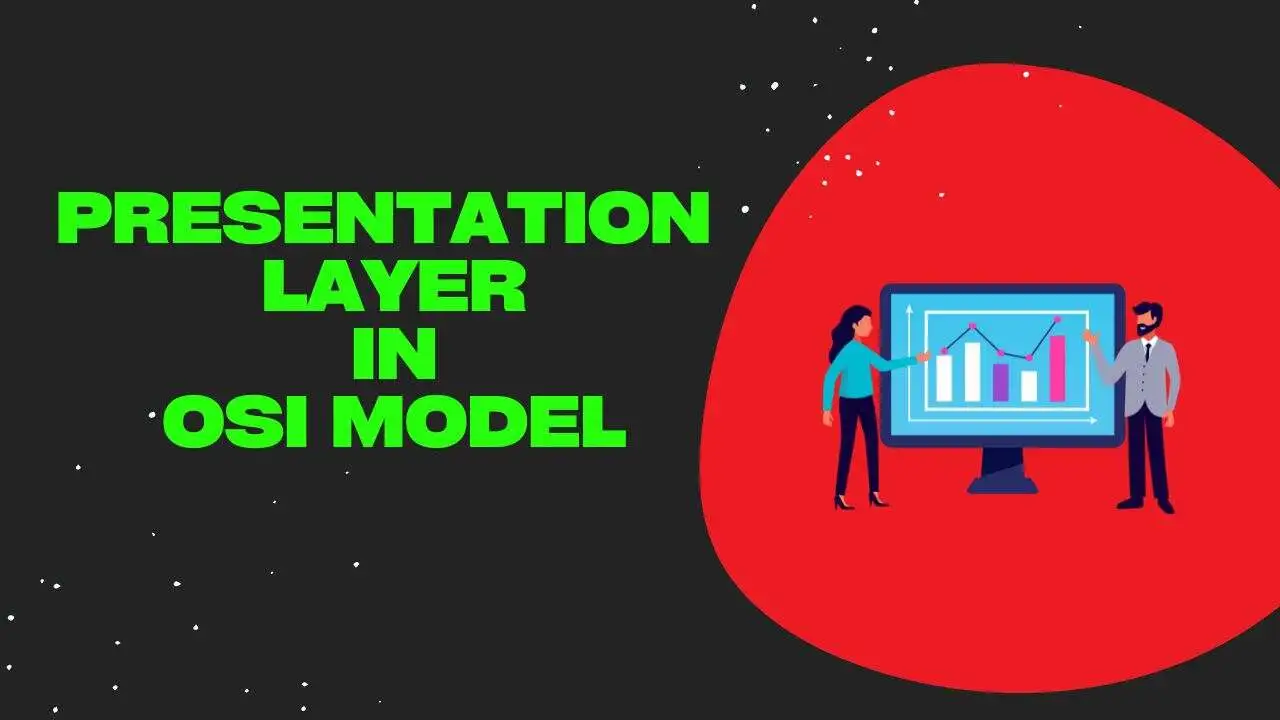In this blog, we will see the sixth layer of the OSI model, which is the Presentation Layer. We will see what services are provided by the Session Layer. So let’s get started with the blog.
Table of Contents
- Introduction to Presentation Layer
- Services provided by the Presentation layer in OSI Model
- Sublayers of presentation layer in the OSI model
- Related Blogs on OSI Model
- Recent Articles on Computer Networks
Introduction to Presentation Layer
The Presentation Layer is a crucial component of the OSI (Open Systems Interconnection) model, which defines a conceptual framework for how different networking and communication protocols should interact to enable seamless data exchange between devices and systems. The OSI model is divided into seven layers, and the Presentation Layer is the sixth layer in this model.
The primary function of the Presentation Layer is to ensure that the data exchanged between two devices is in a format that both the sender and receiver can understand and interpret correctly. It acts as a translator or converter, handling data translation, encryption, compression, and formatting tasks. This layer helps shield the application layer from the complexities of data representation and communication details.
Services provided by the Presentation layer in OSI Model
The Presentation Layer, which is the sixth layer in the OSI (Open Systems Interconnection) model, provides several important services to ensure effective communication between devices and systems. These services are designed to handle data translation, encryption, compression, and other tasks related to data formatting and representation. Here are the key services provided by the Presentation Layer:
A) Data Translation and Encryption:
- Data Translation: The Presentation Layer is responsible for translating data between different data formats, character sets, and encoding schemes. This ensures that data from one application can be understood by another application, even if they use different representations.
- Data Encryption and Decryption: The Presentation Layer can encrypt data before transmission and decrypt it upon reception. Encryption ensures that sensitive information remains secure during communication and can only be accessed by authorized parties.
B) Data Compression and Decompression:
- Data Compression: This service involves reducing the size of data before transmission by removing redundancies and using compression algorithms. This helps optimize bandwidth usage and improves the efficiency of data transfer over networks.
- Data Decompression: At the receiving end, the compressed data is decompressed back to its original form by the Presentation Layer. This restores the data to its original format for proper interpretation.
C) Data Formatting:
- The Presentation Layer handles data formatting to ensure that the data is presented in a way that is coherent and usable by the receiving application. This includes tasks like formatting data into structures that the application can understand and process.
D) Protocol Conversion:
- In cases where two communicating devices use different communication protocols, the Presentation Layer can perform protocol conversion. It translates the data from one protocol into a format compatible with the other protocol, enabling communication between devices that would otherwise be incompatible.
E) Character Encoding and Translation:
- The Presentation Layer manages the conversion of character encodings, such as ASCII to Unicode, ensuring that characters and symbols are represented accurately across different systems and languages.
F) Data Integrity Checks:
- The Presentation Layer can include mechanisms for detecting errors or corruption in the data during transmission. This helps ensure that the received data is accurate and has not been altered or corrupted in transit.
G) Encryption Key Management:
- For secure communication, encryption keys need to be managed. The Presentation Layer can handle the generation, exchange, and management of encryption keys to ensure secure data transmission.
In essence, the Presentation Layer acts as a bridge between the application layer and the lower layers of the OSI model. It ensures that data is properly formatted, encrypted if necessary, and translated as needed, enabling effective communication between applications and systems with differing requirements and capabilities.
Sublayers of presentation layer in the OSI model
These sublayers are not universally standardized like the seven layers of the OSI model itself, but they can help break down the responsibilities of the Presentation Layer into more manageable components. Here’s a common breakdown of potential sublayers within the Presentation Layer:
A) Data Translation Sublayer:
This sublayer is responsible for handling data translation tasks, such as character encoding conversion (e.g., ASCII to Unicode), numeric representation conversion (e.g., binary to decimal), and other transformations needed to ensure that data is represented in a format that the receiving application can understand.
B) Data Encryption Sublayer:
This sublayer handles data encryption and decryption. It manages encryption algorithms, encryption keys, and the process of converting plain text data into encrypted form for secure transmission. At the receiving end, it decrypts the data back to its original form.
C) Data Compression Sublayer:
Within this sublayer, data compression and decompression take place. It manages compression algorithms that reduce the size of data before transmission, as well as the decompression of data at the receiving end to restore it to its original form.
D) Data Formatting Sublayer:
This sublayer is responsible for data formatting and presentation. It ensures that the data is structured in a way that the receiving application can interpret correctly. This includes arranging data into fields, records, or frames, depending on the communication requirements.
E) Protocol Conversion Sublayer:
If needed, this sublayer handles the conversion of data between different communication protocols. It translates data from one protocol’s format to another, enabling communication between devices or applications that use different protocols.
The main goal of these sublayers is to break down the responsibilities of the Presentation Layer into distinct categories, making it easier to understand the wide range of tasks it performs to ensure seamless data exchange between applications and systems.
Related Blogs on OSI Model
- Data Link Layer in OSI Model | OSI Model Data Link Layer
- Network Layer in OSI Model | OSI Model Network Layer
- Transport Layer in OSI Model | Computer Network Transport Layer
- Session layer in OSI Model | OSI Model Session layer
- Application Layer in OSI Model | OSI Model Application Layer
Recent Articles on Computer Networks
- Introduction to Computer Networking | What is Computer Network
- What are Topology & Types of Topology in Computer Network
- What is FootPrinting in Cyber Security and its Types, Purpose
- Introduction to Cloud Computing | What is Cloud Computing
- Distributed Shared Memory and its advantages and Disadvantages
- What is VPN? How doe VPN Work? What VPN should I use?
- What is an Internet and How the Internet Works
- What is a Website and How Does a Website or web work?
- Introduction to Virus and different types of Viruses in Computer
- What is TCP and its Types and What is TCP three-way Handshake
- What is UDP Protocol? How does it work and what are its advantages?
- What is an IP and its Functions, What is IPv4 and IPv6 Address
- What is MAC Address and its Types and Difference MAC vs IP
- What is ARP and its Types? How Does it Work and ARP Format
- Sessions and Cookies and the Difference Between Them
- What is ICMP Protocol and its Message Format?
- What is Big Data? Characteristics and Types of Big Data
- Disciplines of CyberSecurity | What are the goals of CyberSecurity?
- What is Firewall, Features, Types and How does the Firewall Work?
- Network Scanning, Types, and Stealth Scan in Computer Network
- Cryptography and its Types in Ethical Hacking
- Tor Browser and How does it Work | Onion Router Tutorial
- Proxy Server, Advantages, Difference between Proxy Server & VPN
- DHCP Protocol and What Are the Pros and Cons of DHCP
- Intrusion Detection System(IDS) and What are the types of IDS
- Domain Name Server, How Does It Work, and its advantages
- Telnet: Introduction, How Does it Work, and Its Pros and Cons
- SOC: Introduction, Functions performed by SOC, and its Pros
- What is SIEM? | What is the Difference between SIEM and SOC?
- Application Layer in OSI Model | OSI Model Application Layer
- What is SSL Protocol or SSL/TLS and SSL Handshake, and Architecture of SSL




